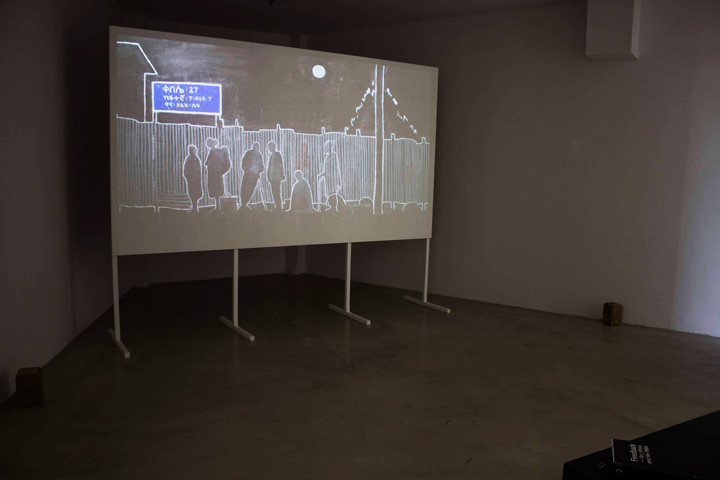2025
2024
2023
2021
2020
2019
2018
2017
2016
Samintu
Words .../ on going
Quercus Rubra
Menged Merkato
2015
2014
2013
2012
2011
2010
2009
2008
2007
![]()
Samintu (The Week )(excerpt): stop action animation on a single canvas, 11 min.: 01 sec.
Group exhibition: "Feedback: Art, Africa and the Eighties"
Curated by Ugochukwu-Smooth C. Nzewi
Reflecting on growing up in Ethiopia in the 1980s'.
The eighties were a gloomy, heavy decade of turmoil for Ethiopia, marked by the rule of Mengistu Haile Mariam, the Wello famine (which killed a million people and affected over 7 million people), Ethiopia and Soviet relations, the civil war with the ELF (Eritrean Liberation Front) and the forming of the TPLF (Tigrayan Peoples' Liberation Front). It was the last decade of the communist Derg regime (Marxist-Leninist military junta).
This animation recreates and explores the everyday "routines" of that era from my own lived experiences. The piece is divided into seven chapters, each chapter for each day of the week. Journeying through the week enabled me to recollect, remember and reflect on my own lived experiences of the era.

Iwalewahaus, University of Bayreuth, Germany
Image courtsey of University of Bayreuth
Exhibitions/ Screenings
2024: “Ezra Wube: Five Aninmations”, Yeh Art Gallery, Queens, NY
2018: "Feedback: Art, Africa and the Eighties", Iwalewahaus, University of Bayreuth, Germany